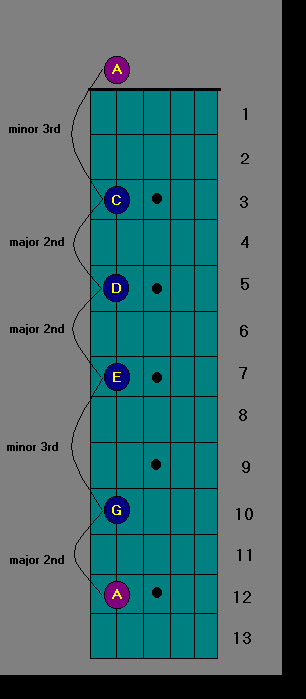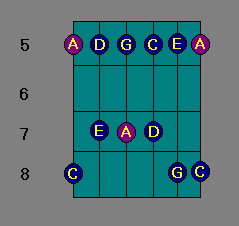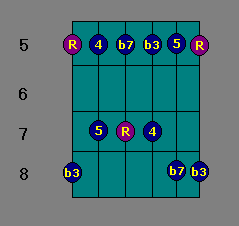
 As you
can see from the diagram, the distance between the first two notes is a minor 3rd followed by a
major second, another major second, a minor third, and finally, a major 2nd.
A more useful analysis of these notes is to compare each note
in the scale to the root note. Remember, music theory is a language
of comparisons. This language enables us to identify and master sound characteristics
(intervals.)
In short, music theory is a map for sound. The better
you know your way around the map, the better you know music and the better you can
communicate musical ideas to other educated musicians with and without your instrument.
So here we go:
A is the root.
As you
can see from the diagram, the distance between the first two notes is a minor 3rd followed by a
major second, another major second, a minor third, and finally, a major 2nd.
A more useful analysis of these notes is to compare each note
in the scale to the root note. Remember, music theory is a language
of comparisons. This language enables us to identify and master sound characteristics
(intervals.)
In short, music theory is a map for sound. The better
you know your way around the map, the better you know music and the better you can
communicate musical ideas to other educated musicians with and without your instrument.
So here we go:
A is the root.
| Note Function: | R | b3 | 4 | 5 | b7 | R |
|---|---|---|---|---|---|---|
| Notes in the A Minor Pentatonic Scale: |
A | C | D | E | G | A |


